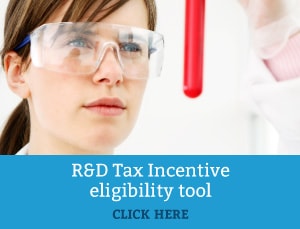ATO ID 2015/4 Income tax: Research and Development: Disposal of research and development results
February 17th, 2015Does the R&D disposal of results provision in section 355-410 of the Income Tax Assessment Act 1997 (ITAA 1997) contemplate apportioning an amount received by an R&D entity where the amount comprises of payment for results from research and development (R&D) and non-R&D activities?
Yes. Section 355-410 of the ITAA 1997 is only concerned with bringing to account the disposal proceeds for the results for which an R&D entity is entitled to a tax offset under Division 355 of the ITAA 1997 and not the disposal proceeds in respect of the other non-R&D results.
The taxpayer is an R&D entity within the meaning of section 355-35 of the ITAA 1997. The taxpayer incurs R&D expenditure on various Innovation Projects and claims the tax offset under section 355-100 of the ITAA 1997. The taxpayer also undertakes Innovation Projects for which it is not entitled to any tax offset under section 355-100 of the ITAA 1997. The taxpayer owns the intellectual property (IP) developed or related to all of these Innovation Projects.
Company A and the taxpayer enter into a Licence Agreement in respect of the taxpayers Innovation Project IP pursuant to which Coy A makes a buy-in payment of $1 million to the taxpayer. This payment is for the grant of an exclusive, perpetual, royalty free, fully paid up licence by the taxpayer to Company A allowing Company A to access the results of the taxpayer’s Innovation Project activities and use and exploit the Innovation Project IP owned by the taxpayer and identified in a schedule to the Licence Agreement.
The Innovation Project IP that is the subject Licence Agreement (as identified in a schedule to the Licence Agreement) includes those that were developed from the taxpayer’s R&D activities for which a tax offset was claimed under section 355-100 of the ITAA 1997 and those developed from activities for which the taxpayer had no tax offset entitlement under that section.
The Licence Agreement also attaches a specific value to each Innovation Project IP identified in the schedule to the Licence Agreement. The values disclose that $900,000 of the $1 million buy-in payment related to Innovation Project IP developed as a result of R&D activities for which the taxpayer was entitled to the tax offset under section 355-100 of the ITAA 1997. The remaining $100,000 related to Innovation Project IP developed from other activities in respect of which the taxpayer had no tax offset entitlement under section 355-100 of the ITAA 1997.
Section 355-410 of the ITAA 1997 is an integrity provision which corresponds to the former integrity rules in subsections 73B(27A), 73B(27B) and 73B(27C) of the Income Tax Assessment Act 1936. The role of these provisions is to ensure statutory revenue treatment for amounts received by an R&D entity relating to the results of R&D activities, including from the granting of rights to the results by way of licensing.
Section 355-410 operates to include certain amounts (referred to as ‘results amounts’) an R&D entity receives or is entitled to receive in an income year in the R&D entity’s assessable income for that year. The results amounts are set out in paragraph 355-410(1)(b) of the ITAA 1997:
(i) an amount for the results of any of the R&D activities;
(ii) an amount from granting access to, or the right to use, any of those results;
(iii) an amount attributable to the R&D entity having incurred the expenditure, including an amount it is entitled to receive regardless of the results of the R&D activities;
(iv) an amount attributable to the R&D asset being used for the purpose mentioned in subparagraph (a)(ii), including an amount the R&D entity is entitled to receive regardless of the results of the R&D activities;
(v) an amount from *disposing of a *CGT asset, or from granting a right to occupy or use a CGT asset, where the disposal or grant resulted in another person acquiring a right to access or use any of those results.
*denotes a term defined in section 995-1 of the Income Tax Assessment Act 1997.
Where an R&D entity receives a lump sum for the results from R&D and non-R&D activities, the entire lump sum will not be subject to section 355-410 of the ITAA 1997 simply because a part of it should be subject to it. In such a case section 355-410 of the ITAA 1997 is only concerned with bringing to account the proceeds in respect of the results for which the R&D entity is entitled to a tax offset under Division 355 of the ITAA 1997.
Support for this view can be found in the decision of the Full Court of the Supreme Court of New South Wales in Bambro (No. 2) Pty Ltd v. Commissioner of Stamp Duties (1963) 63 SR (NSW) 522. In that case, under an agreement for the sale of land, the purchaser agreed to buy the land for a fixed sum, after which the vendor agreed to erect a number of buildings for an additional sum the purchaser was required to pay. The purchaser was entitled to withhold payment of the balance of the purchase price for the land until the buildings were completed. The Full Court held that even though the sale of the land and the erection of the buildings were dependent upon each other and formed one entire bargain or transaction, separate prices were agreed for the both events and the building was to commence after the land was transferred. Accordingly, the agreement to transfer the land and the agreement to build were considered to be separate or distinct ‘matters’ for the purposes of levying stamp duty.
Similarly, where the disposal or right to access the results of R&D activities and non-R&D activities are conveyed under a single agreement for a lump sum payment, they need to be considered as separate matters for the purposes of applying section 355-410 of the ITAA 1997. Only the portion of the lump sum attributable to the disposal of the R&D results will be included as assessable income under section 355-410 of the ITAA 1997 as a results amount.
It will be a question of fact as to what portion of a composite lump sum received is attributable to the disposal of R&D results, having regard to the terms of the relevant contract or agreement. The method to be adopted in any particular case must be ‘fair and reasonable’ in all the circumstances (Ronpibon Tin NL and Tongkah Compound NL v. Federal Commissioner of Taxation (1949) 78 CLR 47 at 59; [1949] HCA 15 at paragraph 18; Adelaide Racing Club Inc v. Federal Commissioner of Taxation (1964) 114 CLR 517 at 526; [1964] HCA 57 at paragraph 16). There may be more than one fair and reasonable basis for apportionment of the amount attributable to R&D and non-R&D activities. The Commissioner will accept the method adopted provided it is fair and reasonable, and applied consistently.
In the present case, the taxpayer and Company A identified in the Licencing Agreement the value of the results from the R&D activities and non-R&D activities, with $900,000 of the buy-in payment being attributable to the results from R&D activities. The taxpayer is therefore required to account for $900,000 as a ‘results amount’ under section 355-410 of the ITAA 1997 in the income year it received the buy-in payment.
The “Intellectual Property Rights” as defined in the Licence Agreement includes confidential information, trade secrets, technical data and know-how and unregistered designs, patents and trademarks, these things being neither Division 40 or CGT assets.
Click here for the full ATO ID.
Categories
- ATO Guidance and Materials
- AusIndustry Guidance and Materials
- Case Law
- Federal Budget 2021
- Federal Budget 2022
- For Accountants
- General Information
- Government Policy and Treasury
- Industry Specific Issues
- Interpretative Decisions
- Legislation and Parliamentary Matters
- R&D Tax Credit
- R&D Tax Funding Strategies
- R&D Tax Loans
- Recent News
- Tax Determinations
Archives
- April 2024
- March 2024
- February 2024
- January 2024
- December 2023
- November 2023
- October 2023
- September 2023
- August 2023
- July 2023
- June 2023
- May 2023
- April 2023
- March 2023
- February 2023
- January 2023
- December 2022
- November 2022
- October 2022
- September 2022
- August 2022
- July 2022
- June 2022
- May 2022
- April 2022
- March 2022
- February 2022
- January 2022
- December 2021
- November 2021
- October 2021
- September 2021
- August 2021
- July 2021
- June 2021
- May 2021
- April 2021
- March 2021
- February 2021
- January 2021
- December 2020
- November 2020
- October 2020
- September 2020
- August 2020
- July 2020
- June 2020
- May 2020
- April 2020
- March 2020
- February 2020
- January 2020
- December 2019
- November 2019
- October 2019
- September 2019
- August 2019
- July 2019
- June 2019
- May 2019
- April 2019
- March 2019
- February 2019
- January 2019
- December 2018
- November 2018
- September 2018
- July 2018
- June 2018
- May 2018
- April 2018
- March 2018
- February 2018
- January 2018
- December 2017
- November 2017
- September 2017
- August 2017
- July 2017
- June 2017
- May 2017
- April 2017
- March 2017
- February 2017
- January 2017
- December 2016
- November 2016
- October 2016
- September 2016
- August 2016
- July 2016
- June 2016
- May 2016
- April 2016
- March 2016
- February 2016
- January 2016
- December 2015
- November 2015
- October 2015
- September 2015
- August 2015
- July 2015
- June 2015
- May 2015
- April 2015
- March 2015
- February 2015
- January 2015
- November 2014
- October 2014
- September 2014
- August 2014
- July 2014
- June 2014
- May 2014
- April 2014
- March 2014
- February 2014
- January 2014
- December 2013
- November 2013
- October 2013
- September 2013
- May 2013
- April 2013
- March 2013
- September 2012
- August 2012
- June 2012


 Free Call: 1300 009 390
Free Call: 1300 009 390





 News & Research
News & Research



